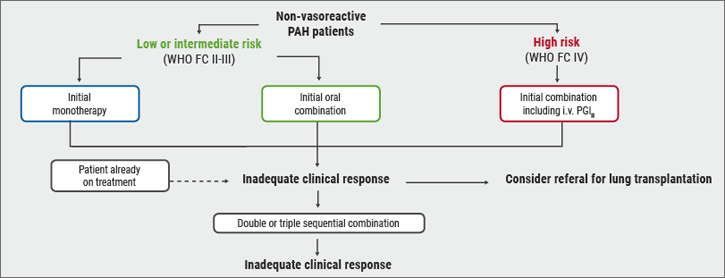Dual bronchodilation in combination with a long-acting β agonist and a muscarinic receptor antagonist was found to decline hyperinflation and increase heart function in the CLAIM trial [1]. The study included 62 COPD patients with hyperinflation expressed by a residual volume of >135% at baseline. All patients were ≥40 years old and had smoked for ≥10 pack-years. The new investigation analysed treatment effects on pulmonary ventilation/perfusion match (VQM) and regional ventilation dynamics by comparing indacaterol/glycopyrronium versus placebo in the CLAIM cohort [2].
Participants were randomised 1:1. Group 1 first received indacaterol/glycopyrronium at a dosage of 110/50 μg per day for 14 days followed by another 14 days of placebo washout. Group 2 was treated in the same way but started with 14 days of placebo switching to the combination afterwards. Perfusion and ventilation of the lung regions was determined by phase-resolved functional lung MRI. An intra-subject healthy reference was used as base for ratings from 0–100% of regional MRI flow-volume curves during continuous tidal volume breathing. VQM was calculated applying a threshold of 20 ml/min/100ml for perfusion and 90% of correlation metric.
As a result, the indacaterol/glycopyrronium treatment led to a 9.7% greater VQM compared with placebo (P<0.0001). Those changes were also associated with significant improvements in left ventricular end-diastolic volume (P=0.015), forced expiratory volume 1 (P<0.0001), and forced vital capacity (P=0.004). The investigators observed a likelihood that the enhanced VQM and regional ventilation dynamics will result in increased oxygenation and subsequently augmented microvascular function as well as ventricular filling.
- Hohlfeld JM, et al. Lancet Respir Med. 2018 May;6(5):368-378.
- Voskrebenzev A, et al. PA 3381. ERS 2019, 29 Sept-2 Oct, Madrid, Spain.
Posted on
Previous Article
« Holistic view on asthma Next Article
Alternative nicotine delivery products: no help in smoking cessation »
« Holistic view on asthma Next Article
Alternative nicotine delivery products: no help in smoking cessation »
Table of Contents: ERS 2019
Featured articles
Letter from the Editor
Interview with ERS president Prof. Tobias Welte
Holistic View on Asthma
Holistic view on asthma
COPD Management
COPD patients derive clinical benefit from β-blockers
COPD patients harbouring Pseudomonas Aeruginosa face high risk of hospitalisation
One blood eosinophil count is sufficient to guide ICS therapy
Female COPD patients frequently suffer from anxiety and depression
Dual bronchodilation improves ventilation dynamics in COPD patients
Vaping
Vaping impairs innate immune response of the airway
Alternative nicotine delivery products: no help in smoking cessation
Air Pollution
Pregnant women and their offspring: a high-risk group for air pollution
Taxi drivers exposed to highest levels of black carbon pollution
Infectious Respiratory Disease: the Role of Vaccines
Vaccines show multiple positive effects with respect to respiratory health
Pneumococcal vaccines: an effective way to reduce COPD hospitalisations
Interstitial Lung Disease
Antifibrotic therapy slows disease progression in ILD
Reduction of FVC decline in systemic sclerosis-associated ILD
Registry confirms nintedanib efficacy under real-life conditions
Best of the Posters
Fever during immunotherapy for NSCLC associated with shorter PFS
Smart shirt as a device to measure tidal volumes in real-life setting
Exercise with virtual reality beneficial for COPD patients
NSCLC: A new way to evaluate hilar and mediastinal lymph nodes
COPD patients do not benefit from azithromycin therapy longer than a year
Novel Developments in Infectious Disease
Long-term azithromycin decreases exacerbations in primary ciliary dyskinesia
Predicting community-acquired pneumonia outcomes by microRNA testing
Pulmonary Vascular Disease
Balloon pulmonary angioplasty for inoperable chronic thromboembolic pulmonary hypertension
Related Articles
January 29, 2024
Biannual zilebesiran associated with substantial BP reductions
September 10, 2020
Clinicians do not follow guidelines for diagnosing hypertension

November 7, 2018
Risk stratification
© 2024 Medicom Medical Publishers. All rights reserved. Terms and Conditions | Privacy Policy
HEAD OFFICE
Laarderhoogtweg 25
1101 EB Amsterdam
The Netherlands
T: +31 85 4012 560
E: publishers@medicom-publishers.com

